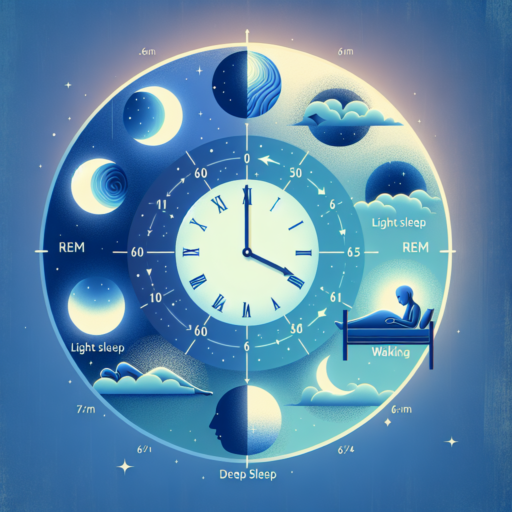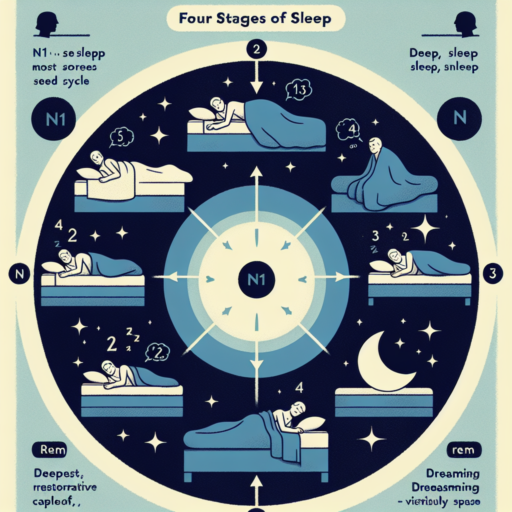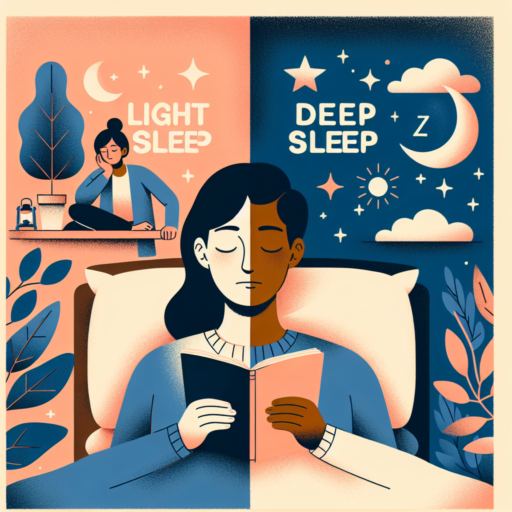How long should I sleep in each cycle?
Understanding the ideal duration for sleeping in each cycle is pivotal for enhancing your sleep quality and overall well-being. While the exact length can vary from individual to individual, it’s important to note that a typical sleep cycle lasts about 90 minutes. During this time, your body transitions through different stages, including light sleep, deep sleep, and REM (Rapid Eye Movement) sleep.
The Significance of 90-Minute Cycles
The 90-minute timeframe is significant because it allows your body to go through each essential phase of sleep, facilitating restoration and memory consolidation. Experts suggest aiming for multiples of this 90-minute cycle to wake up feeling more refreshed. For instance, sleeping for approximately 7.5 hours (5 cycles) or 9 hours (6 cycles) can optimize your chances of waking up between sleep cycles, rather than during one, which can often result in grogginess.
Focusing on the quality of these sleep cycles is just as crucial as their quantity. Ensuring that your sleep environment is conducive to uninterrupted cycles—meaning, it’s dark, cool, and quiet—can greatly impact how effectively you move through each sleep stage. Remember, while 7 to 9 hours of sleep is broadly recommended for adults, paying attention to how you feel upon waking can also guide you in finding the right amount of sleep for your body.
What is the 90 minute sleep rule?
The 90 minute sleep rule is an insightful concept that derives from an understanding of the human sleep cycle. It suggests that sleep is most rejuvenating when it is in synchronization with the natural rhythm of our sleep cycles, which typically last about 90 minutes. By aligning sleep with these cycles, one can wake up feeling more refreshed and alert. This rule posits that instead of focusing on a specific number of sleep hours, we should aim to sleep in multiples of 90 minutes to capitalize on the natural ebb and flow of our sleep stages, including both deep and REM sleep.
At the core of this rule is the premise that waking up in the middle of a sleep cycle can leave individuals feeling groggy and disoriented — a state known as sleep inertia. In contrast, waking up between cycles, when the body is naturally closer to a state of wakefulness, minimizes this inertia. This timing strategy can aid in starting the day with a higher level of alertness and energy. The application of the 90 minute sleep rule can vary among individuals, as each person’s sleep cycle length may slightly differ from the 90-minute average.
To implement the 90 minute sleep rule, it’s recommended to first track and understand your natural sleep cycle’s timing. This can involve observing the time you naturally wake up without an alarm after falling asleep. Adjusting bedtime in 90-minute increments can then help find the optimal sleep duration. For example, if you notice you naturally wake up after 7.5 hours (five 90-minute cycles), that might be your ideal sleep duration, rather than the commonly recommended 8 hours.
No se han encontrado productos.
Is a sleep cycle 45 minutes?
The concept of a sleep cycle being precisely 45 minutes is a topic of common debate and interest among sleep researchers and individuals keen on understanding their sleep patterns better. While sleep cycles can vary from person to person, the average duration typically ranges closer to 90 minutes. However, the notion of a 45-minute sleep cycle isn’t without basis and could be a partial reflection of one half of the complete cycle, especially when considering the structure of sleep stages.
Understanding Sleep Stages
Throughout the night, a sleeper transitions through different stages of sleep, categorized broadly into REM (Rapid Eye Movement) and non-REM stages. This entire process constitutes a full sleep cycle. Initially, the cycle begins with the lighter stages of non-REM sleep, transitioning into the deeper, more restorative stages, and finally culminating in REM sleep. If one were to simplify this process, each ‘half’ could approximately be around 45 minutes, explaining the misconception or partial truth behind the 45-minute cycle theory.
The Role of Short Sleep Cycles
In certain cases, individuals might experience shorter sleep cycles due to disturbances, sleep disorders, or even natural variations in their sleep architecture. This can result in waking up feeling unrested or at the end of a shallow sleep stage. Here, understanding the intricacies of one’s sleep cycle, whether it be 45 minutes, 90 minutes, or another duration, becomes pivotal for improving sleep quality.
- Non-REM Sleep: Constitutes the initial 65-75% of the night, divided into three stages, transitioning from light to deep sleep.
- REM Sleep: Follows Non-REM stages, occurring approximately 90 minutes after sleep onset, characterized by vivid dreams.
Is 2 sleep cycles enough?
The question of whether 2 sleep cycles are enough has garnered attention in the world of sleep science and among those seeking to optimize their sleep for health and productivity. A single sleep cycle, typically lasting about 90 minutes, includes stages of both non-REM and REM sleep, each playing a crucial role in brain function and overall well-being.
Experts suggest that while short naps or limited sleep might briefly improve alertness, consistently relying on just two sleep cycles per night may lead to significant health ramifications over time. The ideal number of sleep cycles for adults ranges between 4 to 6 per night, translating into approximately 7 to 9 hours of sleep. This duration supports cognitive functioning, emotional regulation, and physical health, contributing to a well-balanced life.
Understanding the importance of each sleep stage within these cycles highlights why restricting sleep to just 2 cycles could be detrimental. For instance, deep sleep, occurring primarily in the first half of the night, is essential for physical renewal, hormone regulation, and immune function. Meanwhile, REM sleep, more abundant in the latter half of the sleep timeline, plays a key role in memory consolidation and mood regulation. These processes can be compromised if the body does not complete enough cycles.




